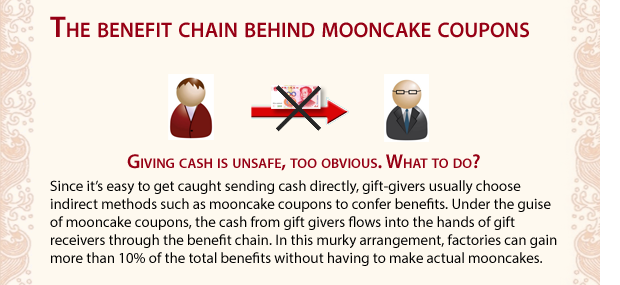Across the country, Chinese are observing the annual harvest festival by giving and receiving mooncakes, pastries whose round shape is meant to evoke the full moon of the autumnal equinox. In recent years, bemoaning the debasement of this tradition has become as much of an annual ritual as the festival itself. This is because the once homey, hockey-puck-like confections have become vessels for all that is perceived to be rotten—and much that actually is—in Chinese society: bribery, piracy, conspicuous consumption, and waste. The mooncakes are traded for favors, nestled in packaging which at its lavish extremes is as jewel-encrusted as a limited edition Rolex (sometimes with the Rolex, or a fistful of cash, thrown in). They are displayed as markers of wealth, status, and above all power, and then discarded (sometimes to be formed into next year’s mooncakes), their cast-off packages piled so high they seem like they might reach the moon itself.
This year, Chinese media have reported that President Xi Jinping’s new austerity campaign—which calls for the Chinese Communist Party to eschew luxury and graft—has taken a toll on the mooncake industry. But how much of a dent will it make?
Last year, Sohu Business published the following graphic on the galactic size of the mooncake trade. We publish here, in partnership with Tea Leaf Nation, whose Xiaoying Zhou translated from the original Chinese.
—The Editors










